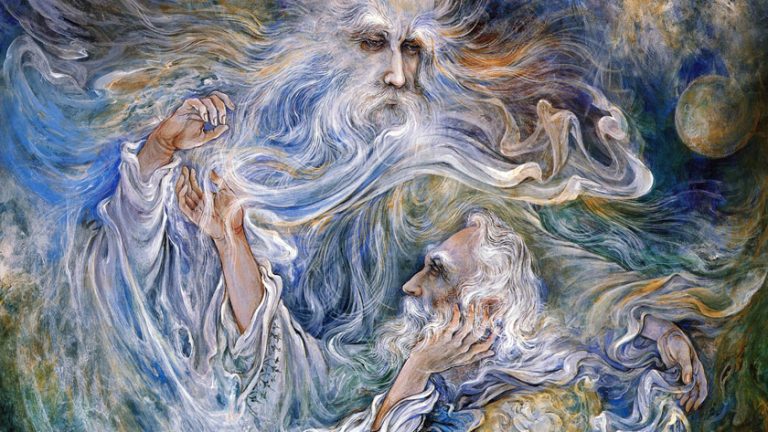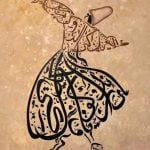The turning point in Rumi’s life came about the year 1244, when he met in Konya a mysterious wandering Sufi called Shamsoddin of Tabriz. Shams, as he is most often referred to by Rumi, taught him the highest and profoundest levels of Sufism that transferred Rumi from a pious religious scholar to an ecstatic mystic and poet.
Although many of the followers of the tradition of Rumi’s father considered Shams to be totally unworthy of Rumi’s time and attention, he, himself, regarded Shams to be the most complete manifestation of God. Rumi expressed his love and utter devotion for his master, Shams, through thousands of lyrical poems.
What consistently is reported about the period of time that Rumi spent with Shams is that it triggered intense jealousy and resentment among his disciples. They also feared that their highly respected master was risking his reputation by mixing with someone so unworthy in their eyes. These disciples eventually drove Shams way, but on hearing reports of sightings of him in Syria, Rumi sent his own son, Soltan Valad, to ask him to come back. Although Shams did return a year later in 1247, he soon disappeared forever.
According to some traditions, Shams was killed by Rumi’s disciples after they had seen that driving him away from Rumi had failed to separate him permanently from their master, but there is little external evidence so support this claim.
References
Rumi, The Masnavi: Book One, translated by Jawid Mojaddedi, Oxford World’s Classics Series, Oxford University Press, 2004.
Lewisohn L. The Philosophy of Ecstasy: Rumi and the Sufi Tradition, Nicosia, London, Rumi Institute and I.B. Tauris, 2011.
Arberry, A. J. Discourses of Rumi, A translation of Fihi Ma Fihi, Samuel Weiser, New York, 1972.










